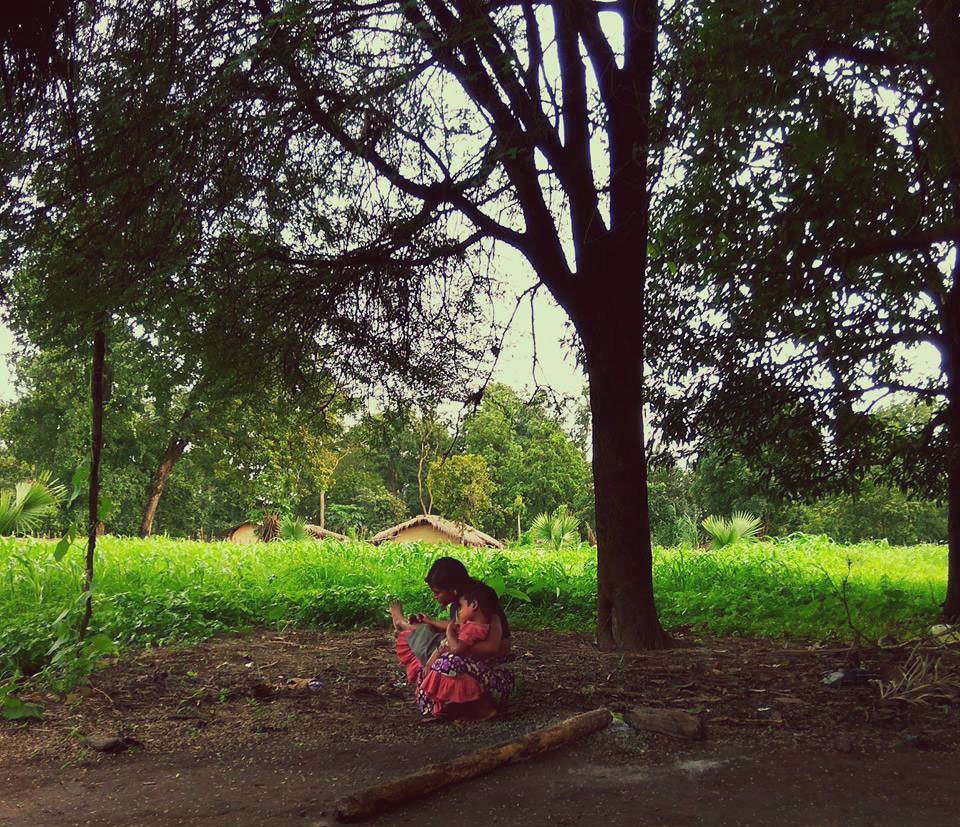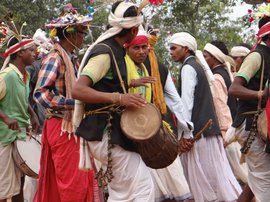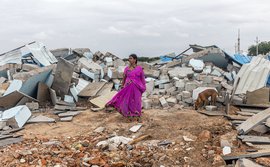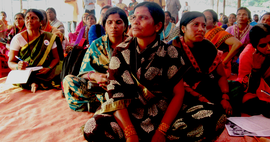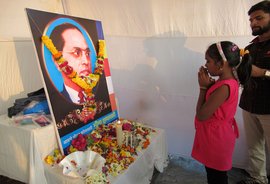The music of the Adivasi communities of Chhattisgarh is a music of resilience – of people caught in decades of violent conflict, whose songs, often accompanied by drums, speak about the beauty of their land, their forests, their daily lives and a reverence of nature. Children too are taught these songs in their families at a young age.
We visited Farsegarh village in Bhairamgarh tehsil of Bijapur district in southernmost Chhattisgarh in August 2016. Of Bijapur’s population of around 255,000 (Census 2011), 80 per cent belong to the Scheduled Tribes. Farsegarh’s 1,400 residents, as well as those of neighbouring villages, are mostly Muria Gond. The village is among the many impacted by the conflict that involves Naxalite militants, the state, and the state-supported Salwa Judum. The people in the village say they are constantly caught in a cycle of violence.
A woman in Farsegarh, who lost her husband in the conflict, asks, “What else will happen when one son is a Naxal and the other is made a police supporter? What will a family do when they are out to kill each other? That’s the reality that we live in.” She is a farmer in her 50s who did not want to be named. “We don’t earn too much. We don’t even know if we will be alive tomorrow. We are alive today and that’s all we think about.”
Not many government schemes reach Farsegarh – the only state presence seems to be a residential school, the police and Central Reserve Police Force (CRPF) camps.
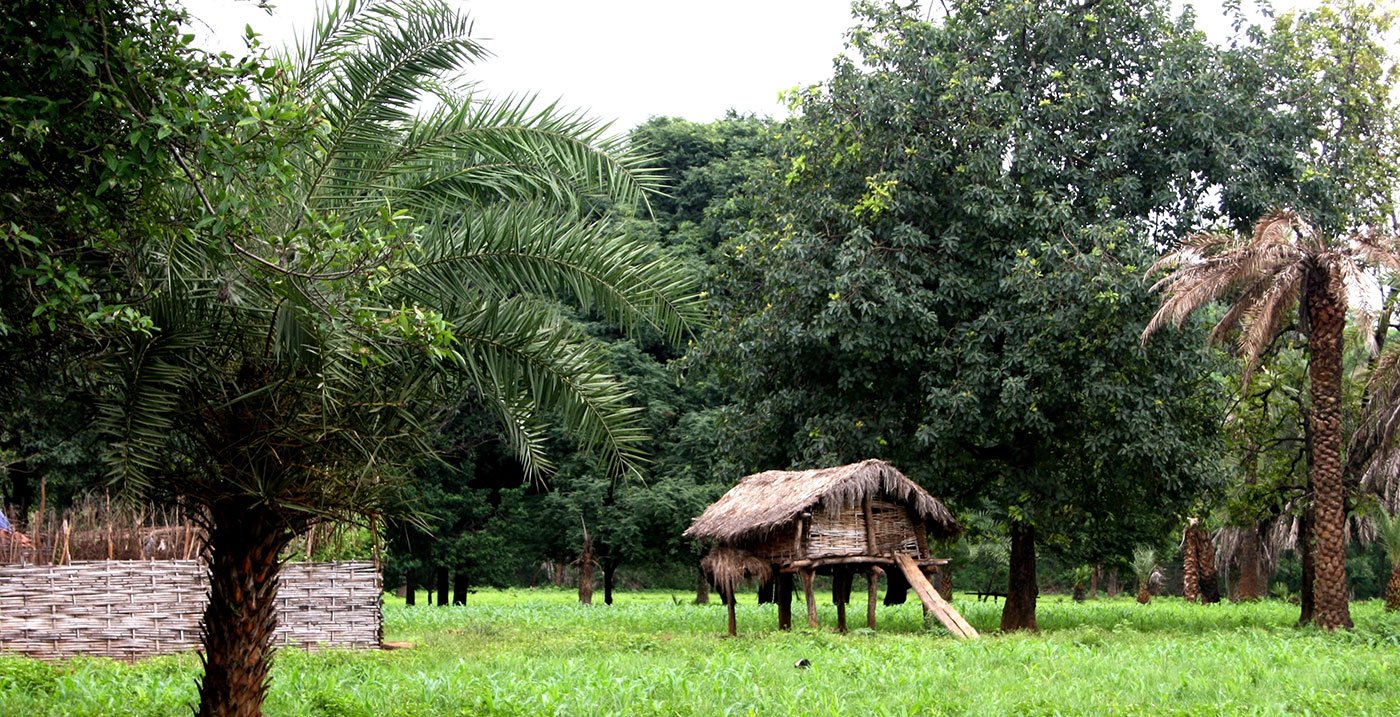
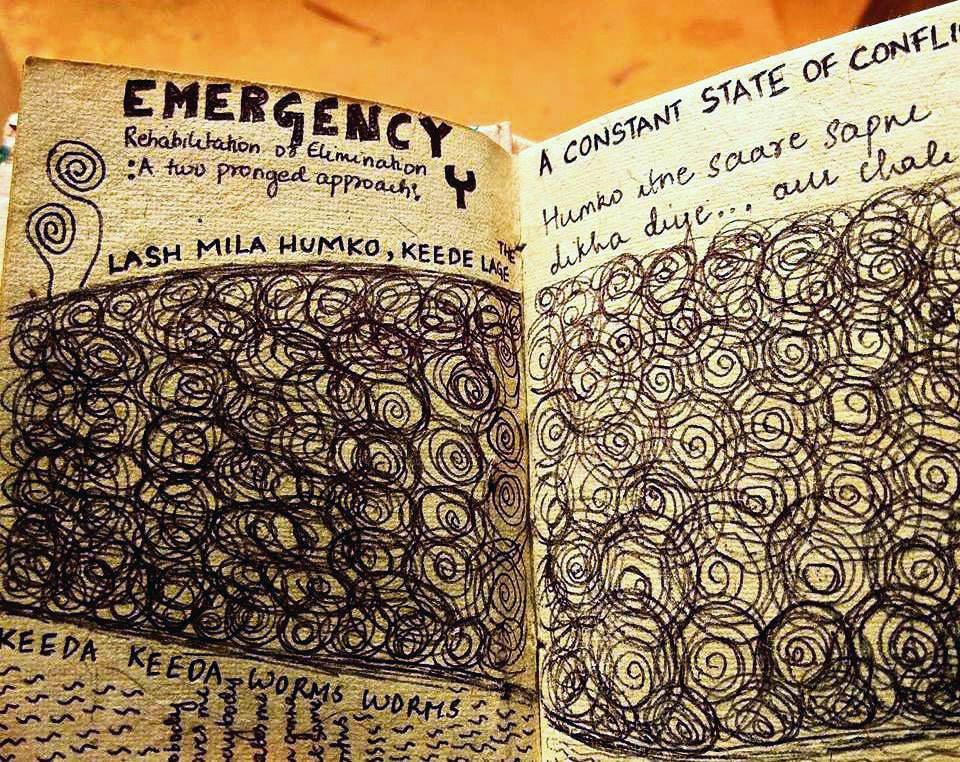
Many Advasi songs of Farsegarh and other villages celebrate the lush beauty of the land, but the experiences of the people speak otherwise. Right: A representation of what an Adivasi woman, who lost her husband in the conflict, said about life amid conflict (Artwork by co-author Arundathi V.)
The residential school for tribal children on the periphery of Farsegarh is not in great shape – electricity is intermittent, the building leaks during the monsoon. The students have to cook and clean in the hostel. There are around 50 Adivasi students here (ages 6-15, all girls, from various nearby villages), one teacher-caretaker, and a cook.
During our visit, the students sang the songs of their communities in the Gondi language, and some of them translated the songs for us in Hindi.
Song 1
Oh
mahua
tree,
Oh
mahua
tree
How beautiful you are,
Oh!
mahua
tree
The
mahua
flowers are falling
Red, red flowers
Like a red shower of rain
Oh
mahua
tree,
Oh
mahua
tree
How beautiful you are,
Oh!
mahua
tree
Singers
Susheela Manra, Farsegarh village
Gayatri Tellam, Dhanora village
Kamala Udde, Sagmeta village
Song 2
My dear cousin,
How beautiful you are…
Tell me what you like?
The crow starts cawing,
Flies around the village
Caw caw caw
Tell me how,
Tell me how?
Singer
Gayatri Tellam, Dhanora village
Song 3
Wear your earrings girl, and come dance with us!
Rela rela rela... [chorus]
Wear your bright clothes girl, and come dance with us!
Rela rela rela… [chorus]
Wear your new shoes girl, and come dance with us!
Rela rela rela… [chorus]
Singer
Avantika Barse, Farsegarh village
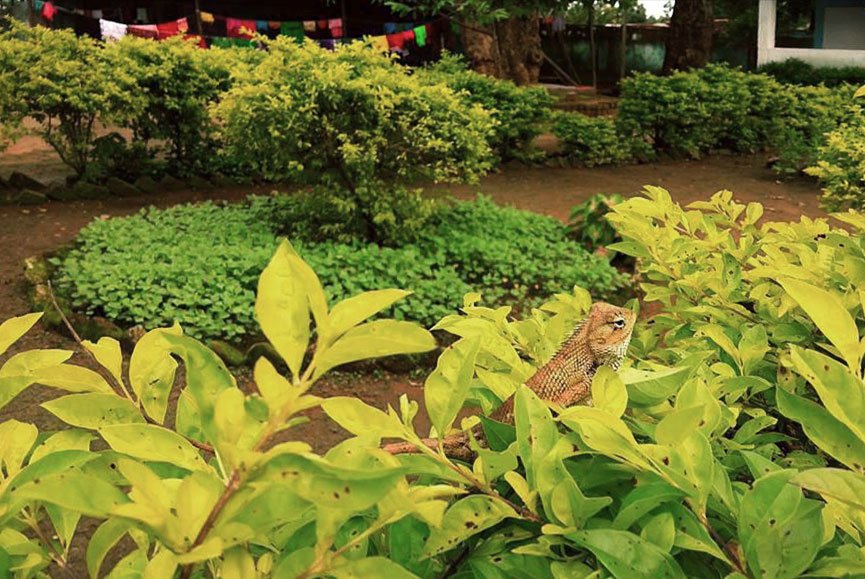
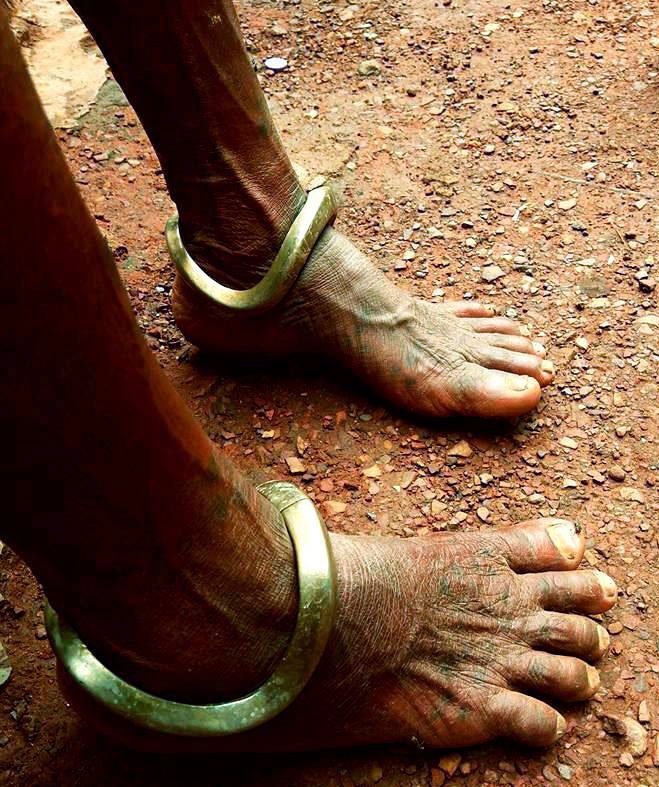
Left: A chameleon lazes in the sun at the school for Adivasi children in Farsegarh. 'Do you see the tail of that chameleon? Catch it!' a song says, playfully. Right: Anklets worn by Muria Gond women; another song the girls sing speaks of dressing up and dancing
Song 4
Rerela rela rela rela…[chorus]
Do you see the tail of that chameleon? Catch it!
Oh sister, sing a song for me, will you?
Oh sister, la la la
Oh brother-in-law, come before me
The tail of the chameleon is green
Do you see it, oh brother-in-law?
Singer
Gayatri Tellam, Dhanora village
Song 5
Rerela rela re rela rela...[chorus]
It is a saffron flag, oh friend!
It is a white flag, oh friend!
It is a green flag, oh friend!
There are 24 lines in the middle of the flag.
Rerela rela re rela rela… [chorus]
Singers
Susheela Manra, Farsegarh village
Saraswati Gota, Bade Kakler village
Kamala Gudde, Sagmeta village
Song 6
Relare rela [Chorus]
You and I, together make a lovely pair.
Oh! dear boy, we make a lovely pair…
Singer
Avantika Barse, Farsegarh village
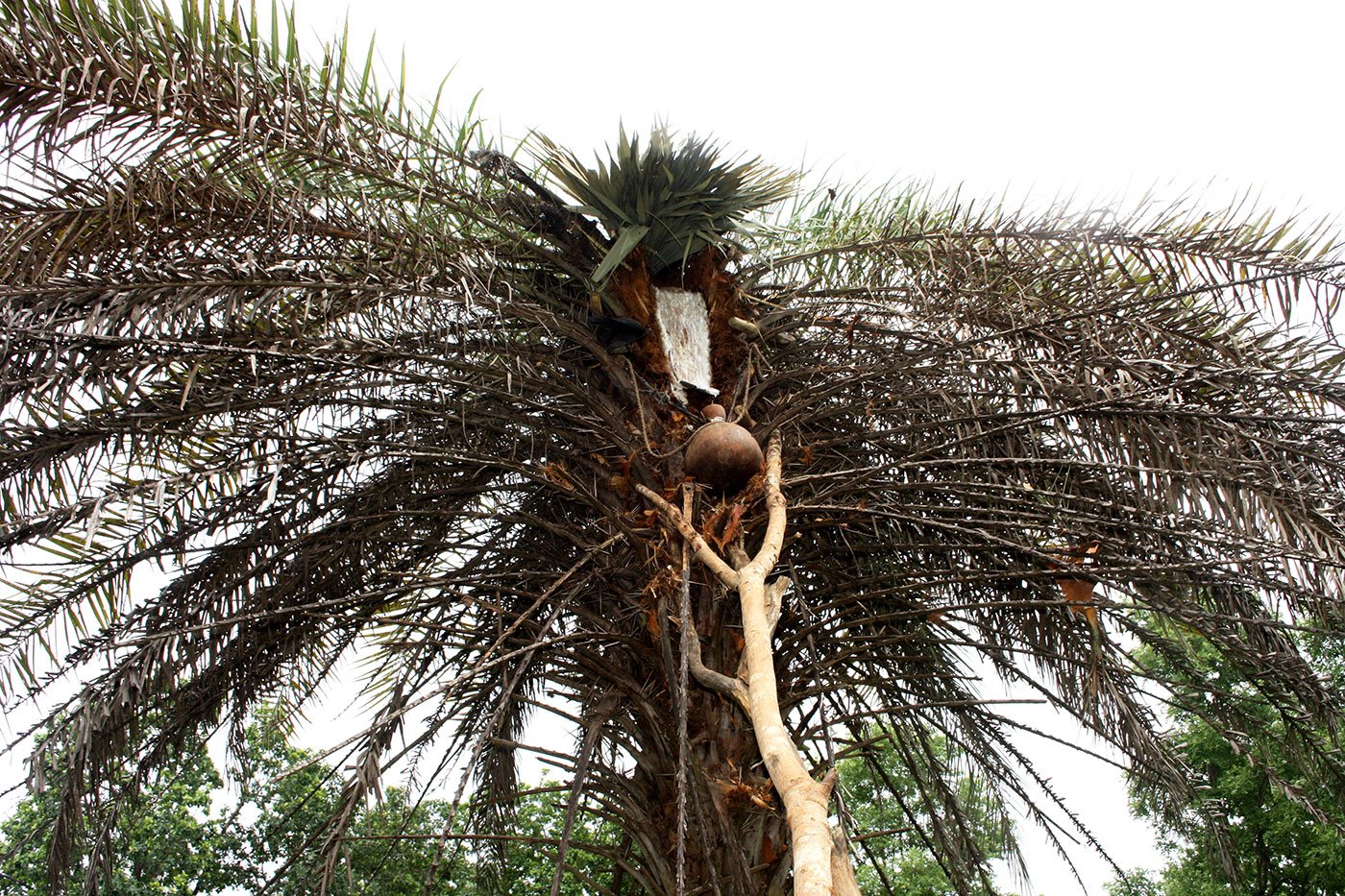
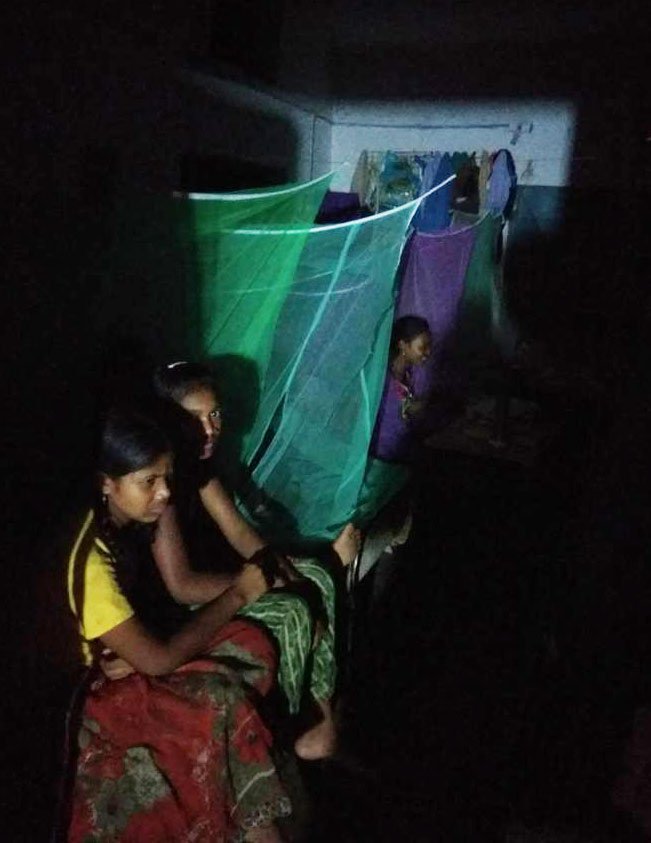
Left: Sweet toddy being tapped from a tree in Farsegarh; one of the songs says, 'We will tap the toddy, Oh! Come to our land'. Right: The girls sing softly with the lights switched off, after school hours
Song 7
Relare rela… [Chorus]
The leaves of the taadi tree sway gently
Oh! Come to our land
We will tap the toddy, Oh! Come to our land
Come, let's cut the tall grass
The grass is swaying gently,
here and there,
here and there
Oh! Come to our land,
together we can cut some grass
Come to our land,
together we can harvest paddy
The leaves of the paddy sway,
Here and there,
here and there
Singers:
Sarita Kusram, Sagmeta village
Saraswati Gota, Bade Kakler village
Susheela Manra, Farsegarh village
